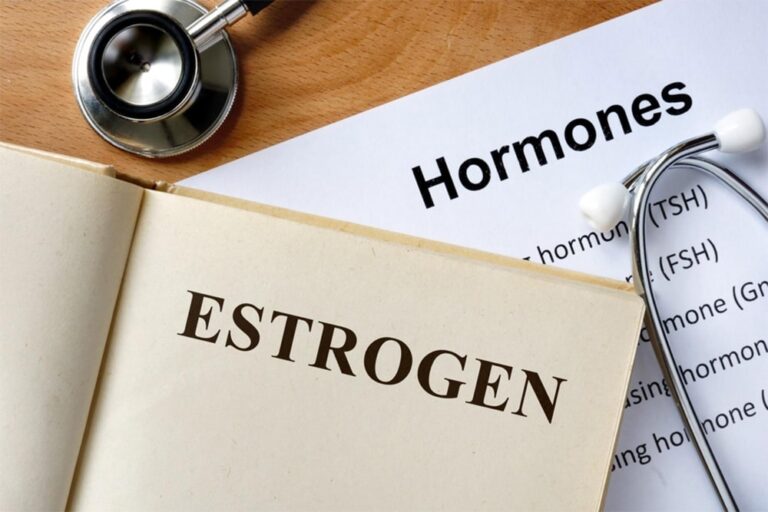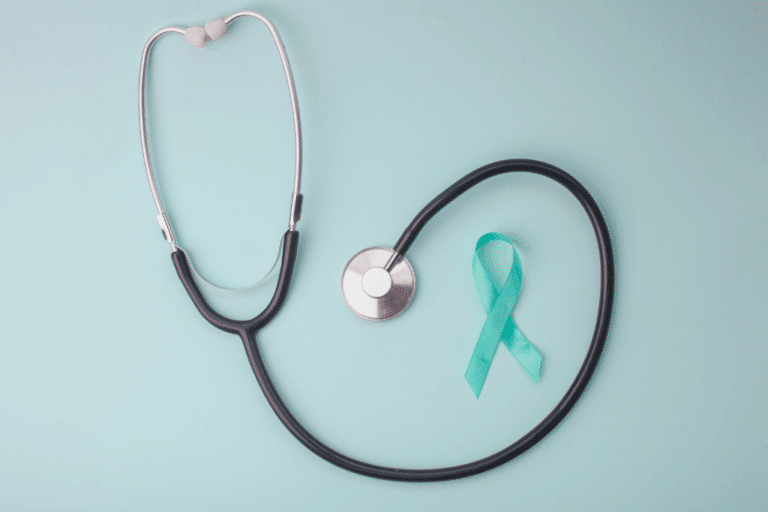Estrogen Dominance.
Estrogen dominance, a condition that is often poo-pooed by the medical community, is an all too common health concern for many women. This condition occurs when the level of estrogen is relatively high compared to the level of progesterone. Surprisingly, estrogen dominance can happen even when levels are in the normal ranges (which are HUGE, by the way). However, the ratio of estrogen to progesterone is what is really important in this situation, not the actual levels of the hormones. An optimal ratio of estrogen to progesterone is between 100 and 500. A number lower than 100 indicates estrogen dominance.
To better understand estrogen dominance, you should first need to understand how estrogen and progesterone function in the body. Estrogen is a collective term for the 3 types of estrogen your body actually produces: estrone (a weaker form that is higher in postmenopausal women), estradiol (the most common form present in women), and estriol (helps prepare the body for childbirth during pregnancy). Finally, estrogens are primarily made in the ovaries but are also produced in the adrenal glands and in fatty tissues.
What Does Estrogen Do?
Estrogens play many roles in the body, and while many of these roles relate to reproduction, there are other important functions. Also, estrogens contribute to the brain, bone, and cardiovascular health, as well as, bodily processes like immune function and the aging process.
For menstruating women, estrogen levels change from the lowest levels during menses to a peak just before ovulation, followed by a sharp drop in the days after ovulation, rising to a second, smaller peak about a week after ovulation, then a gradual decline through menses. In menopausal women, estrogen is still present, but at much lower levels than during menstruating years.
What Does Progesterone Do?
Progesterone plays a role in bone development, cognitive function, sleep quality, blood sugar balance, and energy production as well as helping to maintain pregnancy. It “opposes” estrogen to maintain balance and helps keep it from allowing tissues (like the uterine lining to continuously grow).
Like estrogen, progesterone levels change throughout the cycle in menstruating women. It is low in the early part of the cycle, increasing slowly around ovulation, then rising sharply following ovulation. If pregnancy does not occur, then levels decline just before menstruation, signaling the body to shed the uterine lining.
Although estrogen dominance can occur at any time, it becomes more likely in midlife when ovulation becomes less regular. No ovulation means that levels of progesterone are very low all month, allowing estrogen to run the show in your body. Conditions associated with estrogen dominance in women include PMS, fibrocystic breast, uterine fibroids, and ovarian cysts. Symptoms of ED in females can include decreased libido, irregular menses, mood swings, anxiety, sluggish energy, weight gain, trouble sleeping, crazy periods, and hair loss.
There are several approaches to managing ED, which may include herbal supplements or hormone replacement. Hormone testing can help identify specific imbalances and allow your provider to see the balance of all hormones to each other. This is done by urine, blood, or saliva testing. Each method has its pros and cons. Regardless of whether supplements are used, lifestyle changes are foundational for good hormone balance and are always the first step in my practice when I am helping my clients get their mojo back. Here are several lifestyle steps that can be taken to begin bringing your hormone symphony back in tune.
Support liver health
Liver health is also important in preventing estrogen dominance. Much of estrogen metabolism occurs in the liver and failure to adequately break it down can result in recirculation of it and put you at risk for other diseases. More on this in another post.
Improve your liver health by eating clean, upping your intake of bitter leafy greens, drinking lots of water, and reducing your toxic load by reducing preservative-laden foods.
Eat Brassica family vegetables
This food group is particularly important in estrogen dominance. Brassica family vegetables contain a compound called Indole-3-carbinol (I3C), which supports healthy phase 1 conversion of estrogen to 2-OH-estrogens in women. We know that this phase helps protect against estrogen dominant conditions while decreasing other metabolites (16-OH-estrogens), known to exacerbate estrogen dominant conditions.
This group of veggies is a great source of fiber, which helps clear estrogens through bowel movements.
Members of this family include:
- Broccoli
- Cabbage
- Cauliflower
- Brussel sprouts
- Kale
- Rutabaga
- Rapini
- Kohlrabi
- Bokchoy
- Collard Greens
Reduce stress
Stress relief is helpful for modulating ED. When cortisol is secreted in excess, blood sugar rises, which then increases insulin levels. High insulin states perpetuate inflammation and promote obesity, two risk factors for estrogen dominance. Imbalanced cortisol on its own has been linked to higher inflammatory states. Try reducing stress by exercising, practicing meditation, and mindfulness. You can read more about how to reduce stress from a previous blog article.
Eat clean meats and reduce meat consumption
A diet full of poor quality saturated fat and trans-fats promote inflammation and poor quality meats tend to be riddled with high amounts of these type of fats. Animals fed grain and corn aren’t as lean and tend to be fed antibiotics and injected with hormones to increase their weight for greater profit.
These added chemicals not only increase the toxic load on our body when we eat these foods, but the added hormones also add estrogen to our bodies, promoting estrogen dominance!
Go with grass-fed, pasture-raised meats, or at least try to pick meats that are raised hormone and antibiotic-free.
Avoid chemical products
There are a number of chemical compounds that mimic estrogen in the body, increase aromatase, are liver toxic, and in general, are carcinogenic.
Chemicals specifically found to lead to estrogen-dominant conditions include:
A.) Found in cosmetic products and soaps:
- Metallo estrogens such as aluminum salts
- parabens
- cyclosiloxanes
- phthalates
- musk
- UV sunscreens
B.) Plastic packaging:
- Styrene – a widely used plastic for food packaging
- Bisphenol-A (BPA): the WORST – found to activate aromatase, lower progesterone effects, bind and activate estrogen
Lose weight
I see your eyes rolling right now. “Dr. Anna, if I could lose weight, I would. It won’t budge.” I get it. It’s almost impossible to lose weight when you have ED or high cortisol, so getting these imbalances in order is first priority. This will make weight loss easier. Since fat tissue makes estrogen, losing that is another way to attack ED. This is by far the hardest one on the list, so start with the others on the list and see if it makes a difference in how you feel.
Bottom Line
If you suspect that you might have estrogen dominance, progesterone deficiency, or you’re unsure, consider scheduling a consultation with me at www.drannagarrett.com/lets-talk.
I also offer testing to assess estrogen dominance through measuring the different estrogen metabolites (such as 2-OH, 4-OH, 16-OH) through urine testing. Visit www.drannagarrett.com/connect-the-dots to learn more.
Dr. Anna Garrett is a menopause expert and Doctor of Pharmacy. She helps women who are struggling with symptoms of perimenopause and menopause find natural hormone balancing solutions so they can rock their mojo through midlife and beyond. Dr. Anna is the author of Perimenopause: The Savvy Sister’s Guide to Hormone Harmony. Order your copy at www.perimenopausebook.com.
Dr. Anna is available for 1-1 consultation. Find out more at www.drannagarrett.com/lets-tal




